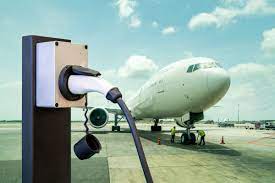CATL and COMAC are dreaming of big electric airplanes. The first company has made some recent battery breakthroughs, and the second has recently brought China’s biggest jet airliner to market.
CATL. Contemporary Amperex Technology Ltd., is a behemoth. According to TheInformation.com, “The company spent $124 million to acquire a lithium mine in China’s Jiangxi province, an operation that would feed into a $2.1 billion battery factory it was building nearby. And in October, it spent $3.6 billion to buy 25-percent of a cobalt operation in the Democratic Republic of Congo. This year, CATL has spent $1 billion on a lithium brine operation in Bolivia, $885 million for lithium rights in China’s Xinjiang province and $920 million for lithium rights in the Chinese province of Sichuan.”
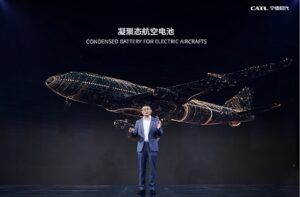
Illustration suggests battery use for almost everything but primary power
This globe-girdling spate of acquisition indicates the seriousness of China’s move to dominate world battery markets. With recent news of CATL’s 500 Watt-hour-per-kilogram cells and their possible use in large aircraft, the need to compete against Amprius and other makers with similar specifications takes on a new urgency.
What Will These Cells Fly In?
COMAC, The Commercial Aircraft Corporation of China, Ltd. is a Chinese state-owned aerospace manufacturer established on 11 May 2008 in Shanghai. The headquarters are in Pudong, Shanghai. The company has a registered capital of RMB 19 billion (US$2.7 billion as of May 2008). The corporation is a designer and constructor of large passenger aircraft with capacities of over 150 passengers.
The first jet to be marketed was the ARJ21 to be followed by the C919, which made its maiden flight in 2017 and has attracted interest from Chinese airlines. The C919, which can seat up to 168 passengers, is meant to compete in the market for single-aisle jets.
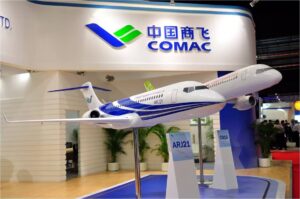
COMAC ,ARJ21 and C919 models on display at recent expo
Despite some controversy over some of the plane’s parts’ origins, the craft is intended to compete with Europe’s Airbus and Boeing’s single aisle, short range airliners. With initial test flights just beginning, the C919 may be a year or so from reaching full market status.
That has not kept COMAC from hopping to the next level with electrification. Showing interest in 2018, COMAC engineers designed and test flew a 1/10th scale version of a twin-tail, four-motor, strut-braced high-aspect ratio wing, canard machine. At the time, it was reported, “The company successfully conducted test flights of its new energy demonstrator ‘Featherling H,’ which utilizes a hybrid power system primarily based on hydrogen fuel and electricity.”
We haven’t heard much about this in the meantime, but COMAC and CATL have now formed a joint venture to explore their options in the electric airplane world.
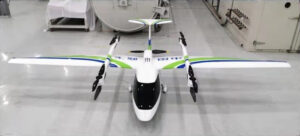
COMAC’s ET120, a lift plus cruise eVTOL for urban air mobility
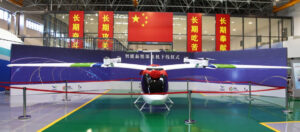
The COMAC ET480, looking very similar to the 120. All part of the same eVTOL family, production craft will be sized for 1, 4, and up to 19 passengers
COMAC developed battery-powered eVTOL (electric Vertical and Landing) machines, the ET120 and ET480 in 2021. They’re both of the Lift plus Cruise configuration, with “completely independent thrusters used for cruise vs. for lift without any thrust vectoring.” Until bigger Chinese craft become a reality, these machines seem like urban air placeholders.
According to Air Data News, “The University of Shanghai Jiao Tong is also participating in the venture, was called as COMAC CATL Aviation.” So far, this mix of state, commerce and academia has not published a specification for the aircraft the team may develop, but from recent presentations, the CATL 500 Watts per kilogram battery will probably play some part in the planning. Despite those presentations, though, it’s unlikely they will power anything as large as COMACs C919 airliner.
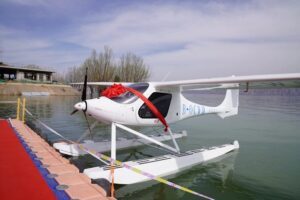
RX1E-S on floats, claimed to be first Chinese battery-powered electric floatplane and using CATL cells
CATL batteries power the Liaoning Generation Aviation Research Institute’s RX1-eS, a training-type craft similar to Pipistrel’s Velis, but would surely intrude on passenger-carrying in a larger airplane. We anticipate seeing how those powerful new batteries get used, and also whether a hydrogen or other alternative fuel is waiting in the wings.

